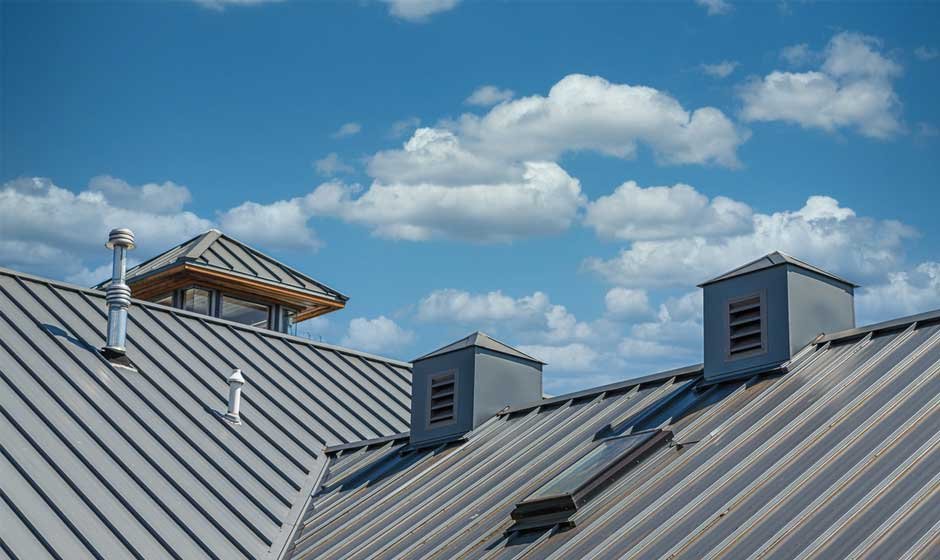Metal roofs are celebrated for their durability, longevity, and aesthetic appeal, but did you know that foam plays a crucial role in unlocking their full potential? Foam not only enhances insulation but also contributes to noise reduction, energy efficiency, and overall structural support. This blog explores how foam complements metal roofs, making them the go-to choice for durability and comfort in homes and commercial buildings alike.
If you’re a DIY enthusiast, architect, contractor, or metal roofing installer, this guide is designed to provide actionable insights into the vital role foam plays in metal roofing systems.
1. Sealing Gaps and Preventing Moisture Penetration
Metal roofs, though robust, require precise sealing to prevent moisture infiltration. Gaps between metal panels or around fasteners can allow water to seep in, leading to rusting, mold, and eventual structural damage. Foam serves as an effective sealant, filling gaps and creating a barrier that prevents moisture intrusion.
For example, closed-cell spray polyurethane foam is often applied beneath metal roofs to form an airtight layer, protecting the structure from water damage over time. Similarly, ensuring proper sealing around metal roofing screws can make a significant difference in maintaining durability.
2. Shock Absorption and Structural Support
Foam acts as a cushion, absorbing the stresses caused by thermal expansion and contraction of metal panels. This cushioning effect reduces wear and tear on key components such as fasteners, reducing the risk of loosening and extending the overall life of the roof. For areas prone to heavy rains, hail, or strong winds, the flexibility and shock-absorbing properties of foam are particularly valuable.
3. Preventing Thermal Bridging
Metal is a highly conductive material, which means without proper insulation, it can transfer both heat and cold into a building. Foam effectively prevents thermal bridging by creating a continuous insulation layer. This helps regulate interior temperatures and prevents condensation build-up, which can weaken the roof over time.
Enhancing Comfort with Foam in Metal Roofs
Improved Insulation for Year-Round Comfort
One of the standout benefits of foam is its insulation properties. Spray foam insulation beneath a metal roof ensures that heating and cooling systems rely less on excessive energy, reducing energy bills. Whether it’s scorching in the summer or freezing in the winter, the insulating layer of foam helps maintain comfortable indoor temperatures.
For architects and contractors, specifying foam insulation in metal roofing projects provides added value and long-term benefits for clients.
Noise Reduction
While metal roofs are durable, they are sometimes criticized for being noisy during heavy rain or hailstorms. Foam, applied as insulation, acts as a noise-dampening agent. It absorbs the sound vibrations caused by rain or impact, making indoor environments more peaceful and pleasant. This feature is particularly beneficial for residential buildings, schools, and office spaces where noise could be a disruptive factor.
Increased Energy Efficiency
By reducing heat transfer and eliminating gaps that lead to drafts or air leaks, foam significantly improves the energy efficiency of buildings with metal roofs. Energy-efficient structures not only reduce utility bills but also contribute to sustainability efforts, making foam insulation an environmentally friendly option for modern construction.
Types of Foam Commonly Used for Metal Roofs
Spray Foam Insulation
Spray foam insulation is applied directly underneath metal roofs, expanding to fill gaps and create an airtight layer. It provides excellent thermal insulation, moisture resistance, and soundproofing.
Rigid Foam Panels
Often used in combination with spray foam, rigid foam panels are pre-cut and installed between metal roof panels and other structural components. These panels are particularly effective for projects requiring precision and consistency.
Polyisocyanurate (Polyiso) Foam Boards
Known for their high R-value (thermal resistance), Polyiso boards are widely used in metal roofing systems to maximize insulation while minimizing material thickness.
Tips for Maximizing Foam’s Effectiveness on Metal Roofs
- Proper Installation
Ensuring foam is properly installed is key to achieving its intended benefits. Poor application can lead to gaps, uneven insulation, and reduced performance.
- Choose High-Quality Materials
Not all foam products are created equal. Selecting high-performance options, such as closed-cell spray foam or Polyiso boards, ensures longer-lasting results.
- Inspect and Maintain
Regular inspections can help identify and resolve any issues with foam insulation, such as gaps or signs of wear, ensuring ongoing effectiveness.
Foam Is a Metal Roof’s Best Partner
When paired with a durable metal roof, foam offers unmatched benefits in insulation, noise reduction, and overall durability. For homeowners, businesses, contractors, and architects, understanding the critical role foam plays can lead to improved project outcomes and long-lasting roofing solutions.
Whether you’re planning your next DIY metal roofing project or specifying materials for a commercial building, foam might just be the secret ingredient for a superior metal roofing system.




